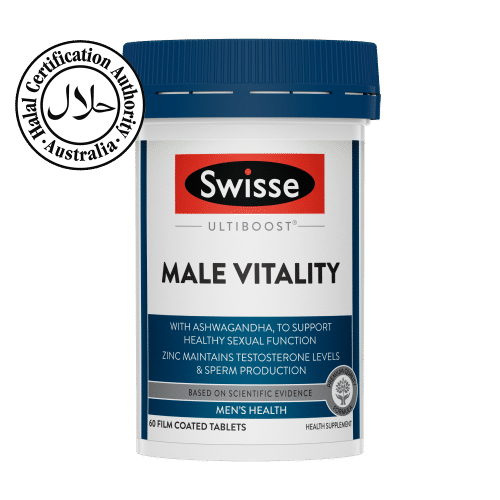According to health experts, understanding how to control blood sugar levels can make a lot of difference in leading a healthy life. MedlinePlus (a service by the National Library of Medicine in the US) explains that blood sugar, or glucose, which is the main sugar found in blood, is carried to the body’s cells to use for energy. And diabetes or no diabetes, sometimes one may have problems when the blood sugar level is too low or too high.
It can be challenging to keep your blood sugar level within the range recommended by the doctor. While health experts believe that many things contribute to the change in blood sugar levels — sometimes even unexpectedly — people can keep it in control with a few lifestyle changes such as monitoring glucose levels, exercising regularly, and following a balanced and nutritious diet plan prescribed by a doctor.
What are blood sugar targets?

Experts describe these targets as the range an individual should try to reach in order to maintain an optimum blood sugar level. However, they differ from person to person.
According to The American Diabetes Association (ADA), blood glucose targets are individualised based on the following.
- duration of diabetes
- age/life expectancy
- conditions a person may have
- cardiovascular disease or diabetes complications
- hypoglycemia unawareness
- individual patient considerations
The Centers for Disease Control and Prevention (CDC), in the US, suggests the following as the typical targets:
- Before a meal: 80 to 130 mg/dL.
- Two hours after the start of a meal: Less than 180 mg/dL.
Additionally, the CDC states that age, health problems and other factors, too, are taken into consideration for determining blood sugar targets. So, it is advisable to seek the help of a healthcare professional to understand which targets might suit one the best.

Apple’s Smartwatch Might Soon Implement No-Prick Blood Glucose Tracking

Healthy And Tasty Cauliflower Recipes To Indulge In Without The Guilt
Why does one suffer from low blood sugar?

As per the ADA, “low blood glucose is when your blood glucose levels have fallen low enough that you need to take action to bring them back to your target range.”
One can suffer from hypoglycemia due to various reasons. According to the CDC, the most prominent ones include taking higher amounts of insulin, skipping meals, drinking alcohol and over-exercising.
Common symptoms of low blood sugar are:
- Shaking
- Sweating
- Nervousness or anxiety
- Irritability
- Dizziness
- Hunger
However, as per the CDC, it is important to note that low blood sugar symptoms vary from person to person. So, it is always advisable to first know the symptoms. This will help catch low blood sugar early and treat it on time.
The CDC states that blood sugar below 70 mg/dL is considered as low.
Why does one suffer from high blood sugar?

According to Healthline, “hyperglycemia or high blood sugar is associated with diabetes and prediabetes (when your blood sugar is high, but not high enough to be classified as diabetes.)”
Numerous factors can lead to high blood sugar levels. The CDC considers the most prominent ones as being sick, stressed, overeating and consuming less insulin.
Common symptoms of high blood sugar are:
- Tiredness
- Persistent thirst
- Blurry vision
- Frequent urge to urinate
How can one control blood sugar levels?

Healthline states that reducing your “blood sugar levels naturally is key to managing prediabetes or diabetes.”
Incorporating the following points in one’s daily lifestyle can help to naturally lower blood sugar levels.
- Exercising regularly: According to Healthline, regular exercise can help one maintain a moderate weight and increase insulin sensitivity, which means that the muscles will be using the available blood sugar in the bloodstream for movement.
- Including ‘exercise snacks’: This means getting up from one’s seat and breaking up the sitting schedule every 30 minutes, for just a few minutes throughout the day. Walking breaks and resistance exercises like leg raises or squats are some of the best ‘exercise snacks’, as per the report.
- Regulating carb intake: Reducing one’s carb intake can help in blood sugar regulation, states the report. The body is responsible for breaking down the carbs one consumes into glucose. This often tends to raise blood sugar levels. Hence, including whole grains instead of processed and refined carbs in diets is beneficial, as they provide the required nutrition as well as help lower blood glucose levels.
- Consuming more fibre: According to Cleveland Clinic, “Soluble fibre has been shown to lower cholesterol by binding to bile (composed of cholesterol) and taking it out of the body.” The CDC states that while low blood sugar is especially common in people with type 1 diabetes, including foods that are high in fibre, such as vegetables, fruits, legumes and whole grains, can be effective in keeping the blood sugar levels in check.
- Drinking water: As per diabetes.co.uk, drinking enough water prevents dehydration and helps the kidneys flush out any excess sugar. A study published in ADA reports that 3,615 people found that those who drank about 1 litre of water per day were less likely to develop high blood sugar than those who drank 0.5 litre or less per day.
- Avoiding beverages: It’s beneficial to choose water over any zero-calorie drinks and sugar-sweetened beverages.
- Monitoring blood sugar levels: Blood glucose monitoring is crucial to maintain one’s blood sugar targets. A blood sugar test at home can be done using a portable glucometer. However, one should consult a doctor before proceeding with this option. Your healthcare professional may also recommend the A1C test (also called HbA1c) in order to monitor your sugar levels. According to the Hong Kong Health Bureau, the blood test calculates the glycaemic effect on haemoglobin in the last two to three months for an individual. The optimal HbA1c level should normally be less than 7 percent in adults and 7 to 8.5 percent in older and weaker people.
- Managing stress: Stress is another factor that can affect blood sugar levels. According to experts, stress leads to the body secreting glucagon and cortisol, which are responsible for spiking up blood glucose levels. A study published in PubMed.gov states that exercise, relaxation and meditation remarkably reduce stress and lowers blood sugar levels.
Conclusion
Blood sugar management is significantly important for people, with or without diabetes. Therefore, healthy lifestyle changes along with monitoring sugar levels, are important to protect one from life-threatening complications.
Additionally, it is important to note that lifestyle changes should be made only after proper discussion with a healthcare professional.
(Main image credit: Towfiqu barbhuiya/Pexels; Featured image credit: Artem Podrez/Pexels)
Frequently Asked Questions (FAQs)
Monitoring your blood sugar is the first step to controlling it. One can also regularly exercise, stay hydrated and avoid stress to keep the sugar level in check.
The average blood sugar level differs from person to person. The US' Centers for Disease Control and Prevention (CDC) suggests the following as the typical targets: Before a meal: 80 to 130 mg/dL. Two hours after the start of a meal: Less than 180 mg/dL. The blood sugar level for children ranges from 70 to140 mg/dl, as per the US Stanford Medicine Children's Health.
You can reduce blood sugar levels naturally by exercising regularly, drinking enough water and avoiding carbs, zero-calorie drinks and sugar-sweetened beverages.







